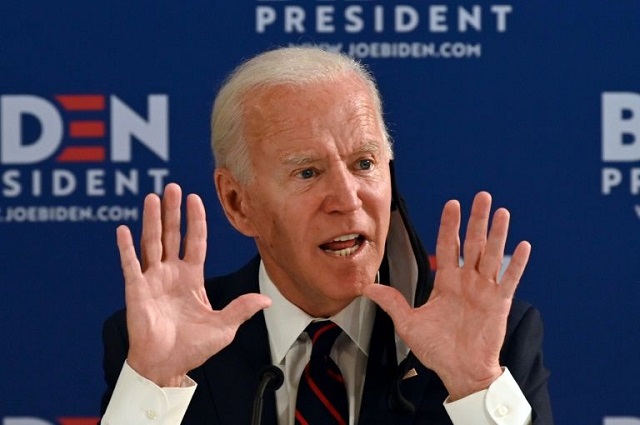
It is a combination of factors, including the U.S. strategic interests for global dominance and the lucrative war business.
BEIJING | Xinhua | Over the weekend, the full-scale war in Ukraine has hit a two-year mark, and the Palestinian death toll in the Gaza conflict is nearing 30,000.
Two ongoing conflicts are causing humanitarian catastrophes. Ignoring this fact, the United States persists in its plans to sustain funding for the conflict in Ukraine and has, for the fourth time, vetoed a UN resolution advocating for a ceasefire in Gaza last week.
Why is the United States not stopping the fighting? Analysts have assessed the scenario and reached a resounding conclusion: It is a combination of factors, including the U.S. strategic interests for global dominance and the lucrative war business.
STRATEGIC INTERESTS
Obviously, the United States has its strategic priorities in these two conflicts. By prolonging both conflicts, its aim is to attain geopolitical objectives in order to uphold its global dominance.
Not long after fighting broke out in Ukraine, U.S. Defense Secretary Lloyd Austin said in April 2022 that the United States hopes the war in Ukraine will result in a “weakened” Russia, a country that was named as a rival power by Washington since 2017.
“It has already lost a lot of military capability and a lot of its troops, quite frankly, and we want to see them not have the capability to very quickly reproduce that capability,” Austin said.
Meanwhile, the United States is seeking to bolster its influence and control in Europe, especially through NATO. Austin also said the United States hopes “to see the international community more united, especially NATO.” He cited the sanctions imposed on Russia by the United States and its allies as an example of how the fighting in Ukraine has made the security alliance more unified.
Furthermore, under the pretext of fortifying security amid the conflict in Ukraine, the United States has taken a number of steps to strengthen its military presence and operations in and around Europe, showed a report to U.S. Congress titled “A Great Power Competition: Implications for Defense” updated on Jan. 10. 2024.
While in the Middle East, the U.S. persistent refusal to stop the Israel-Hamas conflict has drawn attention, as analysts argue that this ongoing conflict has diverted Western leaders’ time and political energy away from Ukraine.
Then why the United States is not stopping this conflict? “That’s primarily because the United States agrees with Israel’s goal of destroying Hamas,” said an opinion piece published by Politico.
A prolonged Israel war on Hamas will dismantle the militant group and “undercuts Tehran,” said the article.
Echoing the point, a Wilson Center report, “National Security Challenges for the United States and Israel in the Biden Era,” said: “Maintaining the U.S. presence in the Middle East is a vested Israeli interest. The United States could consider … operations to push back against Iran in the region.”
“The United States has little interest in negotiating with the Palestinians,” Elias Fuentes, an international affairs expert at the National Autonomous University of Mexico pointed out. While explaining the U.S. stance in the Israel-Hamas conflict, Fuentes said, “its primary focus is safeguarding its own interests.”
ECONOMIC SPINOFFS
U.S. defense giants are faring well amid heavy government demand for military aid to Ukraine and Israel.
According to Biden administration officials, of the 60.7 billion U.S. dollars earmarked for Ukraine in a 95 billion supplemental defense bill, 64 percent will actually flow back to the U.S. defense industrial base.
Industrial production in the U.S. defense and space sector has increased 17.5 percent since the Russia-Ukraine conflict broke out two years ago, Federal Reserve data show.

“The Pentagon’s increased demand for goods and services from U.S. defense companies has likely improved their potential profits,” William Courtney, a retired U.S. ambassador and adjunct senior fellow at the RAND Corporation, told Xinhua.
Seen from financial reports for the year 2023 of major U.S. arms dealers, sales of defense company Raytheon, or RTX, were close to 20 billion U.S. dollars in the fourth quarter, exceeding the third quarter and up by 10 percent compared to the same period last year. Defense firm Lockheed Martin’s stock price surged at the outset of the Ukraine crisis from around the 400 dollar-per-share mark to nearly 500 dollars per share in less than a year.
“Since most of the fight involves ground operations, U.S. and other Western producers of equipment, ammunition, and other supplies for ground forces, including ground-based air defenses such as the Patriot, may have benefitted the most,” Courtney said.
Over the past year, the United States raked in more than 80 billion dollars in major arms deals, with about 50 billion dollars coming from European allies, according to the U.S. State Department.
Likewise, the United States is Israel’s largest military aid provider. The Israeli Air Force uses air-to-ground missiles produced by Raytheon, while Boeing provides Israel with a large quantity of Small Diameter Bombs, Joint Direct Attack Munitions kits, and more.
Lockheed Martin also supplies Israel with “Hellfire” missiles. According to Bloomberg, just over a month after the conflict in Gaza began, around 2,000 “Hellfire” missiles were shipped from the United States to Israel.
Data also showed that the United States has provided Israel with over 130 billion dollars in security and weapon aid since its founding in 1948, with approximately 80 percent of Israel’s military equipment imports coming from the United States.
Besides raking in profits from arms sales, the United States is also making serious money as the Russia-Ukraine conflict has driven up European demand for U.S. liquefied natural gas.
The U.S. has become the biggest exporter of LNG to Europe, as EU countries have raced to replace Russian fuel. Over 60 percent of U.S. LNG exports went to Europe in the last two years.
A sharp critique from a recent Wall Street Journal article said: “While war often has economic spinoffs, these are occurring without the U.S. actually doing any of the fighting.”■
 The Independent Uganda: You get the Truth we Pay the Price
The Independent Uganda: You get the Truth we Pay the Price


